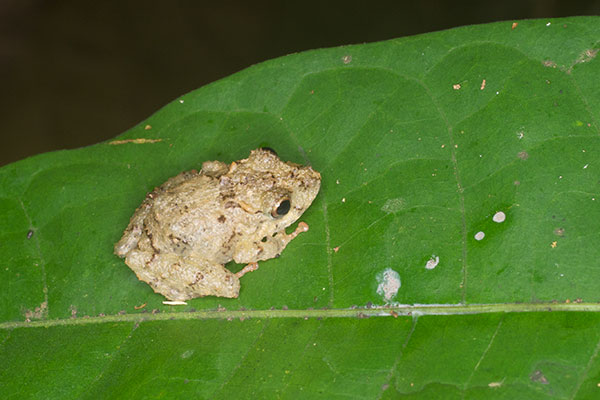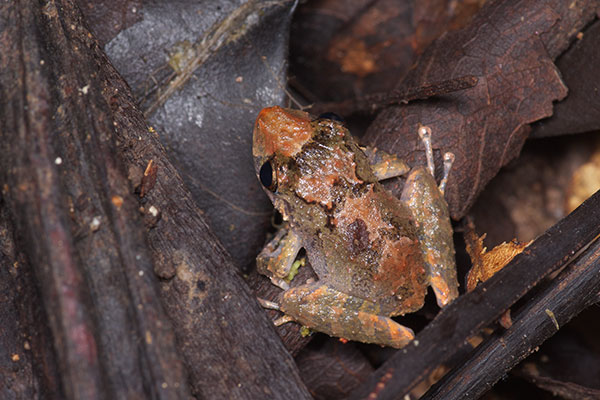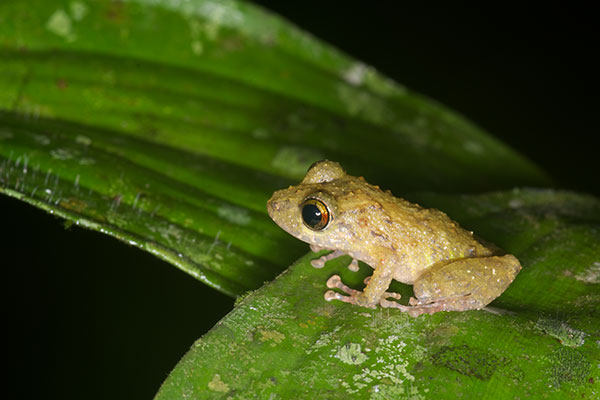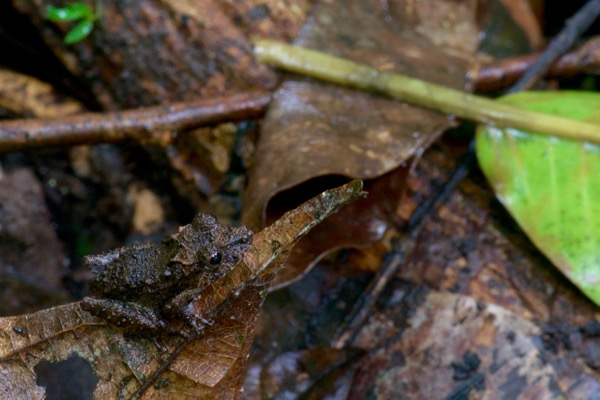Pristimantis croceoinguinis
—
Santa Cecilia Robber Frog
Also known as:
Orange-groined Rain Frog

The little frogs in the genus Pristimantis are extremely difficult to tell apart without examining their bellies, thighs, chins, etc. I took a number of photos of little Pristimantis frogs perched on leaves in Peru whose identities I'll probably never even have a decent guess of. However, Dick Bartlett thought that this particular little guy looked a lot like P. croceoinguinis, so I'm tentatively identifying it as that species.
Here is a complete list of the herps I saw in the wild on my 2013 MT Amazon Expeditions trip.

Despite the completely different colors, this frog also seems likely to be Pristimantis croceoinguinis (and Dick agrees). I do know that some individuals of that species have orange/red head colors.
Here is a complete list of the herps I saw in the wild on my 2014 MT Amazon Expeditions trip.

Here's another frog that was hard to identify. Comparing this frog to all the described Pristimantis species in the general Iquitos area points me to identifying it as P. croceoinguinis. The one detail that's clearly visible in the photo and differs from the description of that species is the red medial stripe in the iris. I am guessing that this trait is variable in P. croceoinguinis since it isn't mentioned in the references I read, but perhaps I somehow overlooked another candidate, or this frog belongs to some undescribed species.
Here is a complete list of the herps I saw in the wild on my 2014 MT Amazon Expeditions trip.

Here's an extra-dark individual well camouflaged on the forest floor. The rough skin and prominent W-shaped ridge on the shoulders are characteristic of this species.
My Travelogues and Trip Lists page includes a complete list of the herps I saw in the wild on my 2016 MT Amazon Expeditions trip.
Printed references:
- Duellman, W.E. 2005. Cusco Amazónico: The Lives of Amphibians and Reptiles in an Amazonian Rainforest